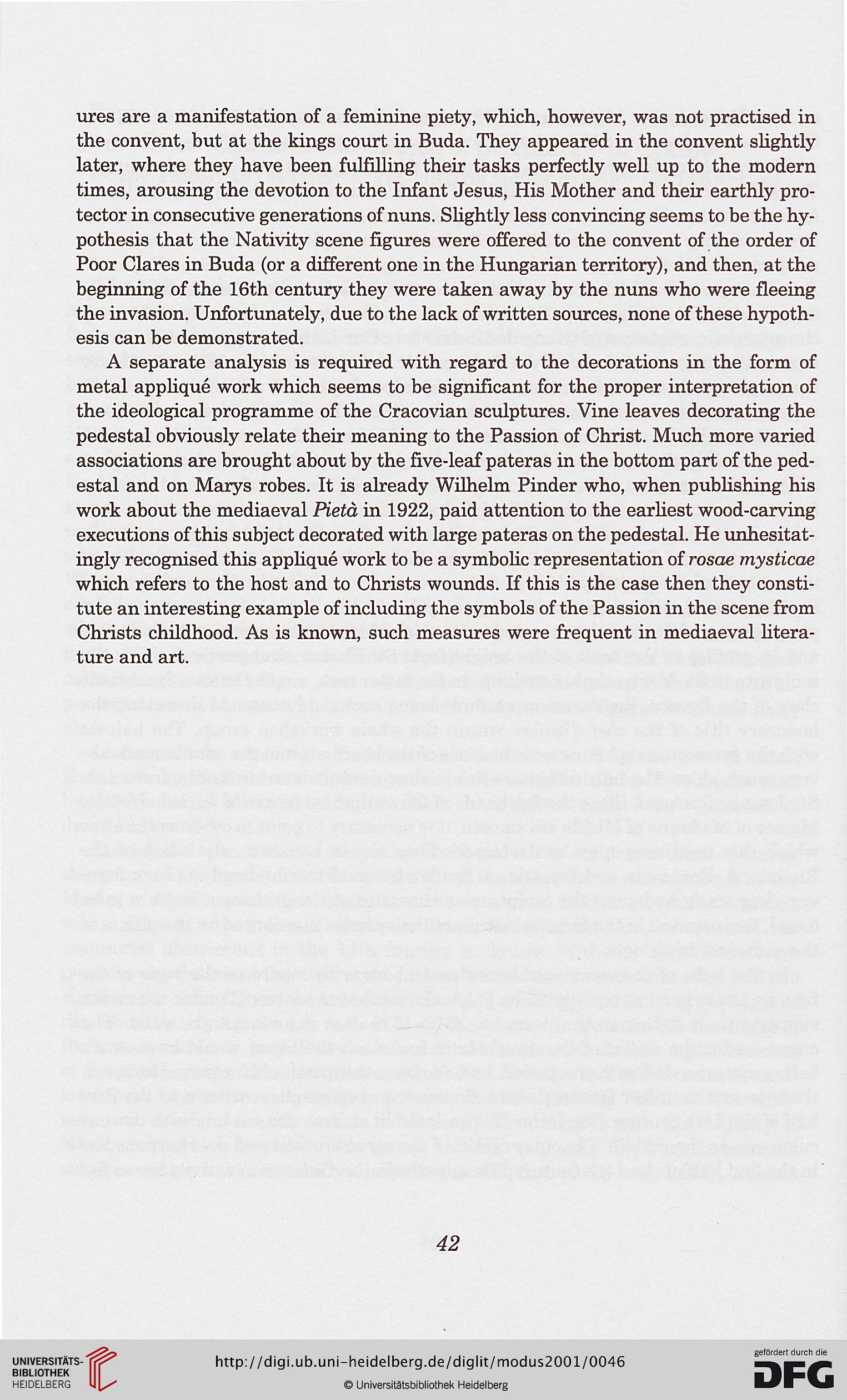ures are a manifestation of a feminine piety, which, however, was not practised in
the convent, but at the kings court in Buda. They appeared in the convent slightly
later, where they have been fulfilling their tasks perfectly well up to the modern
times, arousing the devotion to the Infant Jesus, His Mother and their earthly pro-
tector in consecutive generations of nuns. Slightly less convincing seems to be the hy-
pothesis that the Nativity scenę figures were offered to the convent of the order of
Poor Clares in Buda (or a different one in the Hungarian territory), and then, at the
beginning of the 16th century they were taken away by the nuns who were fleeing
the invasion. Unfortunately, due to the lack of written sources, none of these hypoth-
esis can be demonstrated.
A separate analysis is reąuired with regard to the decorations in the form of
metal appliąue work which seems to be significant for the proper interpretation of
the ideological programme of the Cracovian sculptures. Vine leaves decorating the
pedestal obviously relate their meaning to the Passion of Christ. Much more varied
associations are brought about by the five-leaf pateras in the bottom part of the ped-
estal and on Marys robes. It is already Wilhelm Pinder who, when pubhshing his
work about the mediaeval Pieta in 1922, paid attention to the earliest wood-carving
executions of this subject decorated with large pateras on the pedestal. He unhesitat-
ingly recognised this appliąue work to be a symbolic representation of rosae mysticae
which refers to the host and to Christs wounds. If this is the case then they consti-
tute an interesting example of including the symbols of the Passion in the scenę from
Christs childhood. As is known, such measures were freąuent in mediaeval litera-
turę and art.
42
the convent, but at the kings court in Buda. They appeared in the convent slightly
later, where they have been fulfilling their tasks perfectly well up to the modern
times, arousing the devotion to the Infant Jesus, His Mother and their earthly pro-
tector in consecutive generations of nuns. Slightly less convincing seems to be the hy-
pothesis that the Nativity scenę figures were offered to the convent of the order of
Poor Clares in Buda (or a different one in the Hungarian territory), and then, at the
beginning of the 16th century they were taken away by the nuns who were fleeing
the invasion. Unfortunately, due to the lack of written sources, none of these hypoth-
esis can be demonstrated.
A separate analysis is reąuired with regard to the decorations in the form of
metal appliąue work which seems to be significant for the proper interpretation of
the ideological programme of the Cracovian sculptures. Vine leaves decorating the
pedestal obviously relate their meaning to the Passion of Christ. Much more varied
associations are brought about by the five-leaf pateras in the bottom part of the ped-
estal and on Marys robes. It is already Wilhelm Pinder who, when pubhshing his
work about the mediaeval Pieta in 1922, paid attention to the earliest wood-carving
executions of this subject decorated with large pateras on the pedestal. He unhesitat-
ingly recognised this appliąue work to be a symbolic representation of rosae mysticae
which refers to the host and to Christs wounds. If this is the case then they consti-
tute an interesting example of including the symbols of the Passion in the scenę from
Christs childhood. As is known, such measures were freąuent in mediaeval litera-
turę and art.
42




